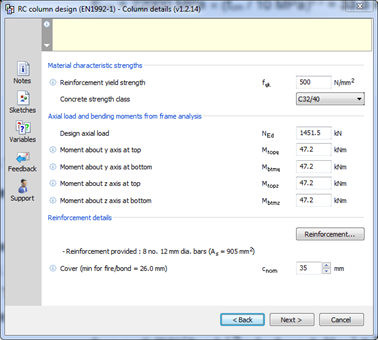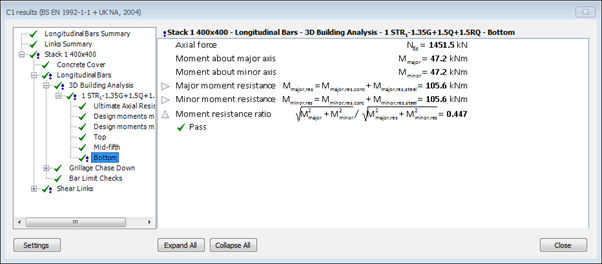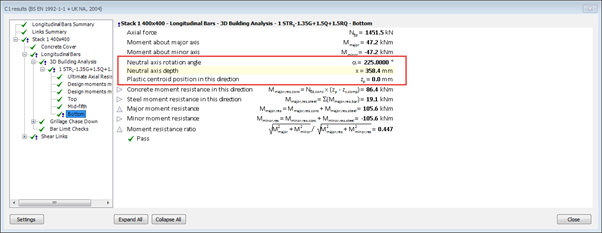Why are bending check results for rectangular columns different between Tekla Tedds and Tekla Structural Designer?
Question
Why are bending check results for rectangular columns different between Tedds and Tekla Structural Designer? I notice for example the NA depth is different. What method does Tekla Tedds use vs Tekla Structural Designer?
Answer
The method specified in equation 5.39 of EC2, which is used in Tekla Tedds, is a simplified approach with limited application which uses an interaction formula based on the moment capacity about each axis considered seperately. Tekla Structural Designer uses a "true biaxial" bending capacity approach, which involves finding both the Neutral Axis (NA) depth and rotation for the resultant of the applied biaxial moments and the associated bi-axial capacity - this is a general and more accurate approach derived from first principles (of stress blocks and strain capacity as specified in the Eurocode) which can be applied to a wide range of cross sections.
In Tekla Structural Designer the method of checking whether the reinforcement in the section is sufficient is to check whether the bending resistance of the section is larger than the applied moment for a given axial force. So it must calculate the neutral axis position (rotation and depth) at which the ratio of the moment limits in each direction is equal to the ratio of the applied moments and the resultant axial resistance of the section is equal to the applied axial force.
This is accomplished by calculating (by iteration) the neutral axis position (rotation and depth) at which the ratio of the moment limits in each direction is equal to the ratio of the applied moments AND the resultant axial resistance of the section is equal to the applied axial force. During iteration, if the ratio of the ultimate moment resistance in each direction is not equal to the applied ratio, then iteration continues for the next NA depth/ angle increment and re-checks the ratio and axial resistance, and so on until a solution is found.
When the final neutral axis angle has been found, the program compares the resultant applied moment with the resultant moment resistance to find the moment utilization ratio for the applied force and moment combination.
Example
In the below example, the same loading has been applied to a column design in Tekla Tedds and Tekla Structural Designer.


If we look at the Neutral axis depth in the output for both calculations, we can see that different values have been calculated using the two methods. The result of this is that the two pieces of software will produce different results for the moment resistance of our column.

